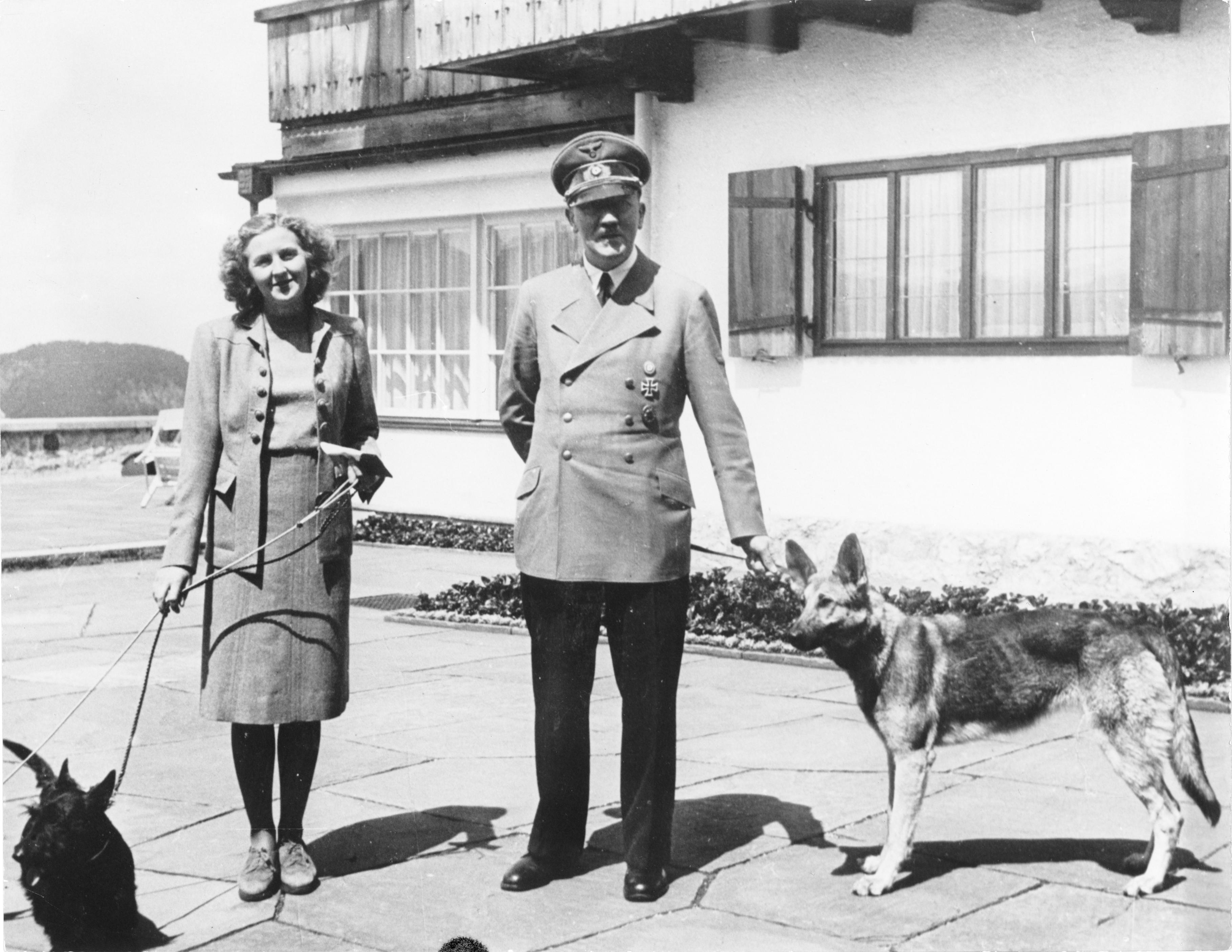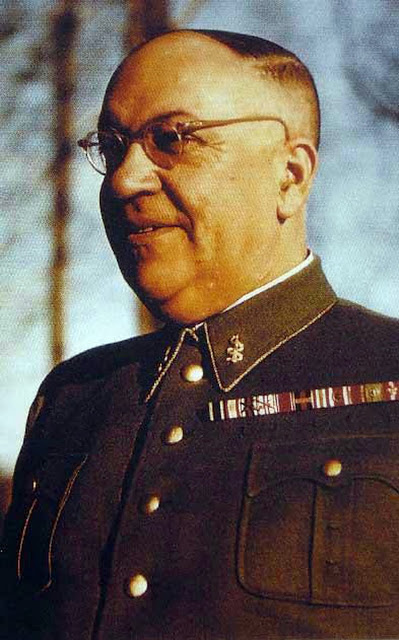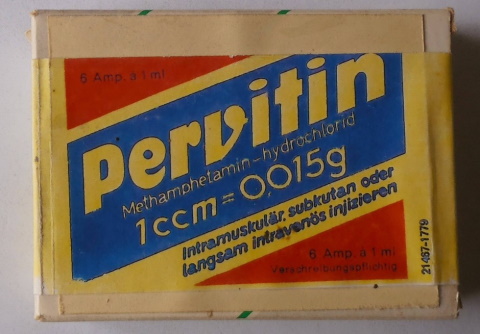

Table of Contents
What are the things that set history in motion? It’s a million dollar question. What were the things behind the major historical events? What pushed the famous people in history to do what they did. Both good and bad. To what extent have their personalities affected the course of history? What was on Adolf Hitler’s mind when he pushed the world into one of the darkest chapters in human history? Today, we have a reliable knowledge of his psychological issues, but we know less about people who were responsible for his severe mental and physical state. At this point we come to Theodor Morell, Hitler’s personal physician, a shadowy person with a peculiar practice of medicine.
Early years
Adolf Hitler never had a high opinion of experts. “Experts are only good at one thing: explaining why something will not work!” he used to say. It was probably why Theodor Morell gained Hitler’s trust in the first place.

Theodor Morell and Adolf Hitler. U.S. National Archives and Records
Theodor Gilbert Morell was born in 1886, in a small Upper Hesse village of Trais-Münzenberg. His father, being a primary school teacher, was a prominent person in a village. With his mother coming from a wealthy farmer family, Theodor had all the prerequisites to pursue a successful career. Although he missed much of his primary school because of health issues, he showed remarkable success in secondary school. At 16, following the steps of his father, Morell went to teachers’ seminary, and even spent a year as a teacher before he decided to go with medicine studies, first at Giessen and then at the Heidelberg university. He also attended medical schools in Grenoble, Paris and Munich, where he ultimately earned his Doctor’s degree.
One of his first jobs was as a doctor on ships sailing to South America, where he got acquainted with tropical diseases. The beginning of the First World War found him in a small practice in Dietzenbach near Offenbach. He volunteered and served as a battalion doctor and then in a POW camp in Thuringia. After the war ended, Morell purchased a practice in 1919 in Bayreuther Straße in Berlin.
It was only after he married Johanna Möller, a wealthy actress, that he improved his practice by purchasing the latest equipment such as X-rays and ultraviolet lamps. Even though Morell was working as a general practitioner, he specialized in treating skin and uro-genital diseases. Indeed, his practice was one of the best in Berlin that saw many famous people and politicians as his patients.
Date of Destiny
Treatment of Berlin’s high society came with a price, though. Because many of the patients were Jews, Morell’s practice has been marked as “Jewish” after Nazis came to power in 1933. Morell, however, didn’t succumb to the new conditions. Whatmore, being an opportunist in his nature, he took it to his advantage. By the end of 1933, Morell had joined NSDAP and opened the door to new opportunities.
The moment of destiny that launched Morell from a posh Berlin physician to the peaks of the Third Reich happened in 1936. A patient suffering from gonorrhea arrived at Morell’s practice. His name was Heinrich Hoffmann. Hoffmann was Hitler’s private photographer and an intimate friend. Luckily for Hoffmann, Morell cured him from an uneasy disease, which was enough for the photographer to recommend the doctor to Hitler, who was at the time obsessed with bowel problems. Morell was invited to meet Hitler in Munich, an invitation that one couldn’t refuse. It was Christmas 1936, when Theo and his wife were invited to a party at Berghof, Hitler’s Alpine residence - a turning point in Morell’s life. In a private conversation, Hitler asked him to take over his medical treatment, especially regarding stomach problems and eczema that appeared on his legs. Already on the following day, Morell examined his new patient. Whatmore, he promised to cure him in one year.

Adolf Hitler and Eva Braun with dogs at the Berghof.Bundesarchiv
A Grateful Patient
By the time of Morell’s arrival, Hitler already had a few more doctors in his entourage. He was a hypochondriac, obsessed with his health and afraid of premature death. In his presence smoking was strictly forbidden, while alcohol was rarely drunk. He even developed strong vegan habits. There were not even fish or eggs on his plate, only vegetables and a lot of cream cakes.
Before the war started, Hitler was in relatively good health, but with a history of serious stomach spasms. These always appeared in moments of great stress, such as during the 1924 trial or the 1935/36 Rheinland military crisis, with the last one being especially strong. The treatment brought Hitler to the verge of collapse. He was on a strict diet that he barely had the energy to walk. Then came Morell, who suspected the cause for spasms was abnormal bacterial flora in the gastro-intestinal tract. And he was right. A simple treatment with coli capsules and vitamins solved the problem with both stomach spasms and eczema. In nine months, Hitler was back to good.
In the eyes of Fuhrer, Morell was a miracle-maker. His position as Hitler’s personal physician was established for good and would not change until the last days of war. In these nine years, there have been more than a few attempts to discredit the work and authority of Morell. Every time Hitler would discard them with words that Morell saved his life back in 1937.
Morell undoubtedly enjoyed the benefits of Hitler’s unlimited trust. For curing him for the first time, Hitler helped him buy a grandiose house in an elite part of Berlin. Morell became a prominent member of the party and was allowed to take over pharmaceutical business, previously confiscated from Jewish owners. With the protection he enjoyed, this business earned him a substantial fortune.
The only thing he failed to achieve was the appreciation of the people around Hitler. Everyone, except the Fuhrer, despised Morell; his obese appearance as well as his doubtful treatment of Hitler’s health.

Theodor Morell in his Leibarzt uniform.
Vitamins Spiced with Drugs
Still, Hitler never doubted his physician. Like many other high-ranking Nazi officials, he also favored unorthodox treatment to established medicine. Indeed, Morell’ treatment provided Hitler with what he desired, enough health and energy to lead the war. It was a short-term success.
When the war started, Morell was attached to Hitler’s HQ and accompanied him where the fuhrer was going. Whatmore, Morell turned out to be the person who spent most of the time with Hitler as he was deeply involved with his health issues. As Hitler became fully engaged with war operations, the health problems returned. Morell blamed those on too much stress, lack of physical activity, and unhealthy bowel flora. The way he saw it, Hitler’s heavy workload meant he was burning more energy than usual. The energy was to be replenished by injecting glucose, multivitamins, heart-and-liver extracts and hormones.
Once the German war machine started to crumble, the stress increased and Hitler’s health deteriorated even more. For Morell, it was not a call to alter his therapy but to continue with it with stronger doses. Apart from treating the lack of energy with extra glucose, Morell also injected his patient with large quantities of Vitamulin, a mixture of vitamins and amphetamines.
The excess intake of glucose alone was very harmful for one’s health, and in Hitler’s case Morell injected several doses per day. Such treatments caused premature arteriosclerosis, a condition that Hitler developed over time. Other side effects also included premature senility.
More contentious to Hitler’s condition were the Vitamulin injections he received. There were grounds to believe that instead of amphetamines, Morell was using a much stronger substance, methamphetamine, a powerful stimulant of the central nervous system.
Using methamphetamine was not uncommon in Germany before the war. In 1937, Temmler pharmaceutical company developed a special method of synthesizing methamphetamine under the brand of Pervitin capsules. The capsules were issued en masse to German soldiers during the 1940 campaign in the West. The goal of breaching through Ardennes and cutting off Allied troops in Belgium was possible only under conditions that German troops took no rest. Indeed, Guderian’s troops who were issued Pervitin reached their goal only because they marched for days without sleeping.

Packaging containing six Pervitin (methamphetamine hydrochloride) ampoules from Germany. by Komischn
The problem with Pervitin, as well as with all other methamphetamines, was that it was highly addictive and caused permanent damage to the neurological system. It was for this reason that the substance was ultimately forbidden by law in Germany. Still, Pervitin found its way to whoever felt the need for it, including Hitler. Morell never noted that he used Pervitin on Hitler, but in his documents discovered after the war, there were several orders of Pervitin. Using Pervitin was the only logical explanation to those who witnessed how Hitler dramatically revived from his collapses after he was treated by Morell’s wondrous vitamin injections.
Even though the Pervitin and similar medications were abolished a long time ago, methamphetamines are still very much present in today’s world, primarily as a recreational drug known as Crystal Meth.
Meth was not the only drug Hitler used. Pervitin helped him stay focused for prolonged periods of time, but was not able to ease the pain caused by stomach spasms. For this, Morell resorted to using opiates such as Oxycodone. Even today Oxycodone is used to treat severe pains, but is also commonly abused as a narcotic drug. Prolonged use of the drug caused severe withdrawal symptoms such as panic attacks, anxiety, muscle pain and others similar to those Hitler experienced.
How high Hitler was on Oxycodone says the fact that after the unsuccessful bomb attack in 1944, Hitler handled the painful process of removing splinters from his body without showing pain whatsoever.

Hitler-Attentat, 20. Juli 1944. Bundesarchiv
Causing Hitler’s downfall?
The funniest thing about the entire treatment was that Hitler was very well aware of what he was taking. He even discussed it with Morell, who never hid from his patient what substances he was using. Hitler simply had unchallenging confidence in Morell’s treatments. Whether this caused his noticeable deterioration of health is an issue of discussion. In the last days of his life, Hitler’s appearance and behaviour showed obvious symptoms of Parkinson’s disease. From a relatively healthy person, he turned into a completely exhausted and senile man. All that time, he was under the supervision of Morell.
In the end, Hitler had to admit that Morell’s treatment wasn’t showing any results. It was too late for Hitler in any case. The two parted ways on April 21, 1945, just days before Soviet troops stormed Hitler’s bunker.
What happened afterwards with Morell was a tragic story. Even though he escaped from Berlin prior to the fall of the city, Morell was ultimately captured by American soldiers. Because of his closeness to Hitler, Morell was interned in the American POW camp in the former Buchenwald concentration camp and questioned for his war “contribution.” After two years spent in camp, Morell was released as they found no proof of him being a war criminal.
By that time, Morell was in pretty bad physical and health condition. American soldiers simply offloaded him to the railroad station, where he was picked up by the Red Cross and taken to a nearby hospital. This hospital was his last station. He died in a hospital bed on May 26, 1948.
For nine years, Theodor Morell was one of the most intimate companions of Adolf Hitler. Moreover, he was the man in charge of his health and probably one that contributed significantly to the tyrant’s ultimate physical and mental downfall. Whether or not he was a charlatan, many would agree that, with Morell, Hitler got the medical care he fully deserved.
